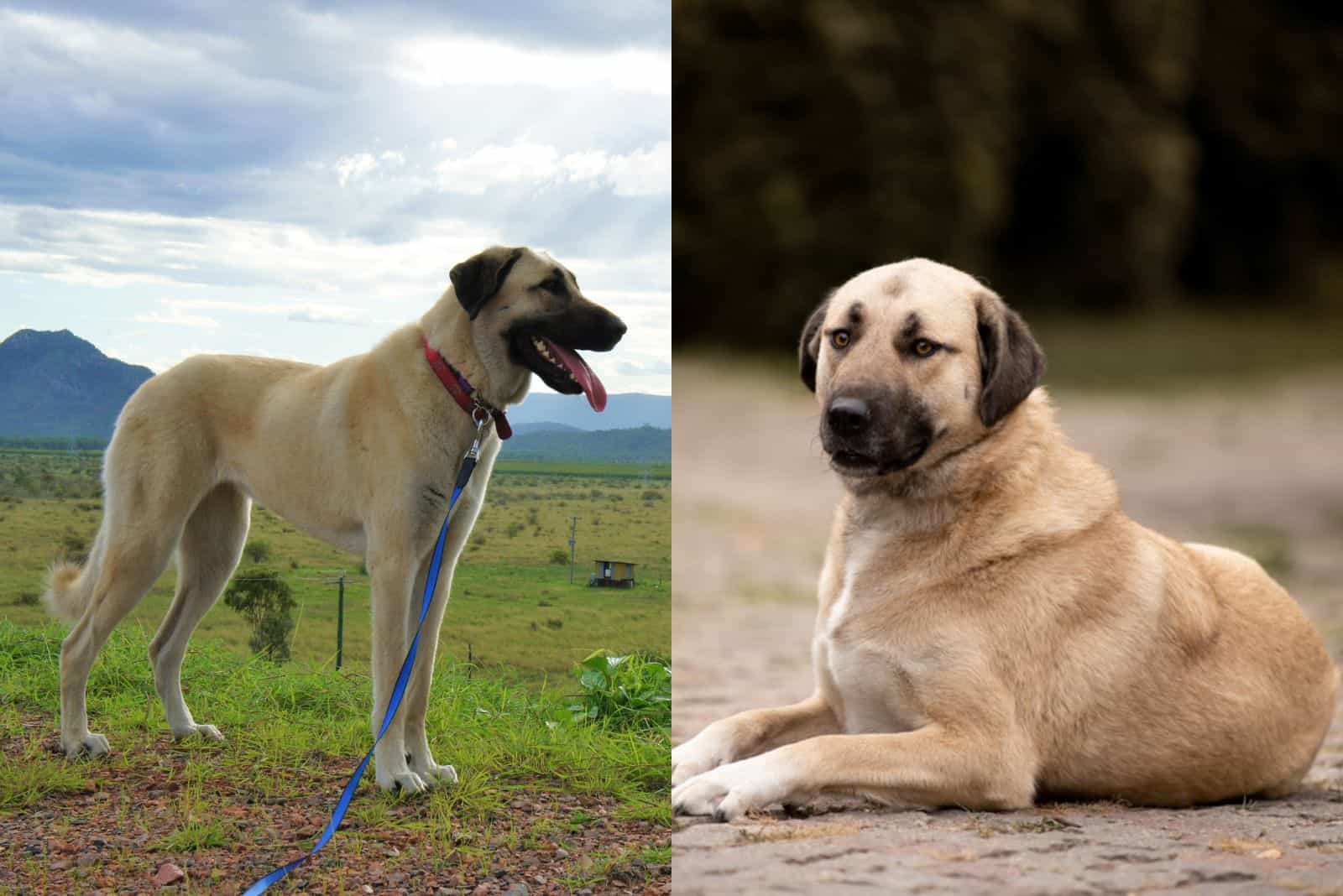When you look at each of these two giant dogs, there is not much to do but admire their strength, power, and athletic physique. That’s right! Both Anatolian Shepherd and Kangal dogs are known for their vigilant nature and for being outstanding watchdogs.
In the battle between Anatolian Shepherd Vs Kangal, there are no clear winners or losers. That’s because both of these two magnificent dogs make fantastic watchdogs, and their traits are almost the same.
However, there are small but vivid differences between these two Turkish beauties. Not all of them are obvious to an untrained eye, but we will help you understand the key differences throughout this article.
If you’re keen on buying either one of these two dogs, then this is the perfect place to learn the basic differences between a Kangal and an Anatolian Shepherd. Let’s begin!
Anatolian Shepherd Vs Kangal: A Short Overview
Even though these two dogs might look the same to an untrained eye, they are actually two separate breeds. In order to distinguish the Anatolian Shepherd dog, we need to look into its physical appearance, temperament, coat colors, price, and lifespan.
[table id=691 /]
These two aggressive dog breeds share a lot of common traits. In fact, the AKC and the FCI (Federation Cynologique Internationale) don’t recognize Turkish Kangal dogs as a separate breed.
They categorize these purebred dogs under Anatolian Shepherds, which is why you won’t find Kangal puppies in AKC shows.
On the other hand, the UKC recognizes Kangal dogs as a separate breed.
Both of these dogs originally came from Turkey. The Anatolian puppy comes from the Central Turkish region – Anatolia, while the latter comes from the Sivas region. Kangal puppies are highly appreciated in this country, and they qualify as Turkish national dogs.
Both canines crossed the ocean prior to WWII for guarding purposes. Both breeds have been popular as working dogs, livestock guardians, and watchdogs. Just like German Shepherds, these canines are on alert all the time, and they make extremely loyal companions.
To some extent, both breeds resemble a Turkish Boz Shepherd, which shares some common traits with these two. Both Anatolian and Kangal Shepherd dogs are fearless and strong, which is why they are widely used against big predators, such as wolves, jackals, and bears.
Anatolian Shepherd Vs Kangal: Physical Appearance
Anatolian Shepherd
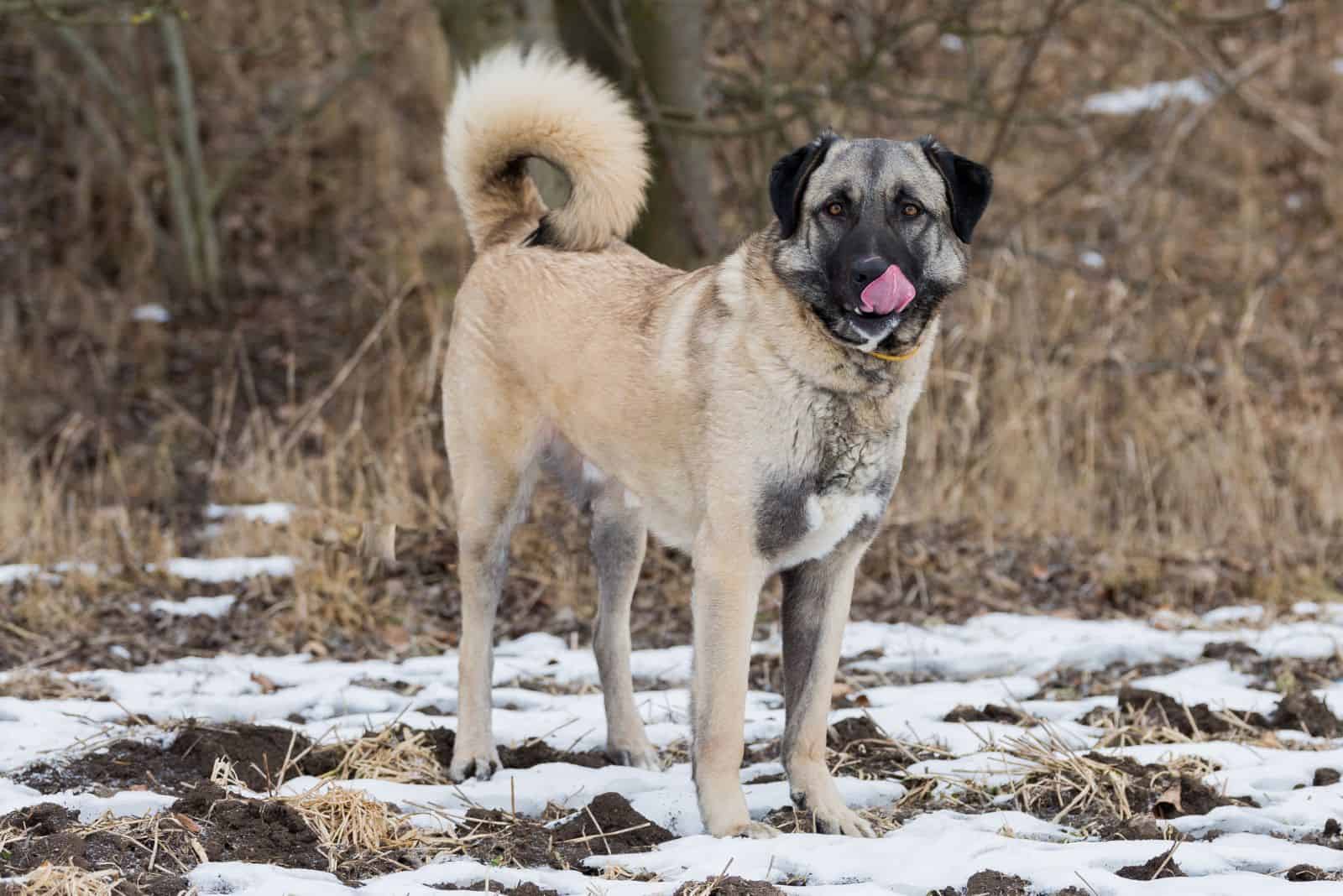
According to breed standards, these Turkish Shepherds are slightly smaller than their Kangal counterparts. Most of the time, the difference is not visible to an untrained eye, but Kangal puppies appear taller by a few inches.
These Anatolian sheepdogs, according to the American Kennel Club, have a smooth, short coat that requires weekly brushing. These dogs are moderate shedders despite their coat length.
Furthermore, they appear in many different color patterns such as fawn, brindle, white, biscuit, gray fawn, and liver.
This guard dog is not hypoallergenic, which is why the breed is not recommended for people who suffer from severe dog allergies.
Even though the breed itself is highly active, the Anatolian Shepherd growth chart is highly affected by the quality of food you give them. They usually take three to four cups a day, but the breed needs higher amounts of protein in order to preserve their muscular body physique.
Kangal
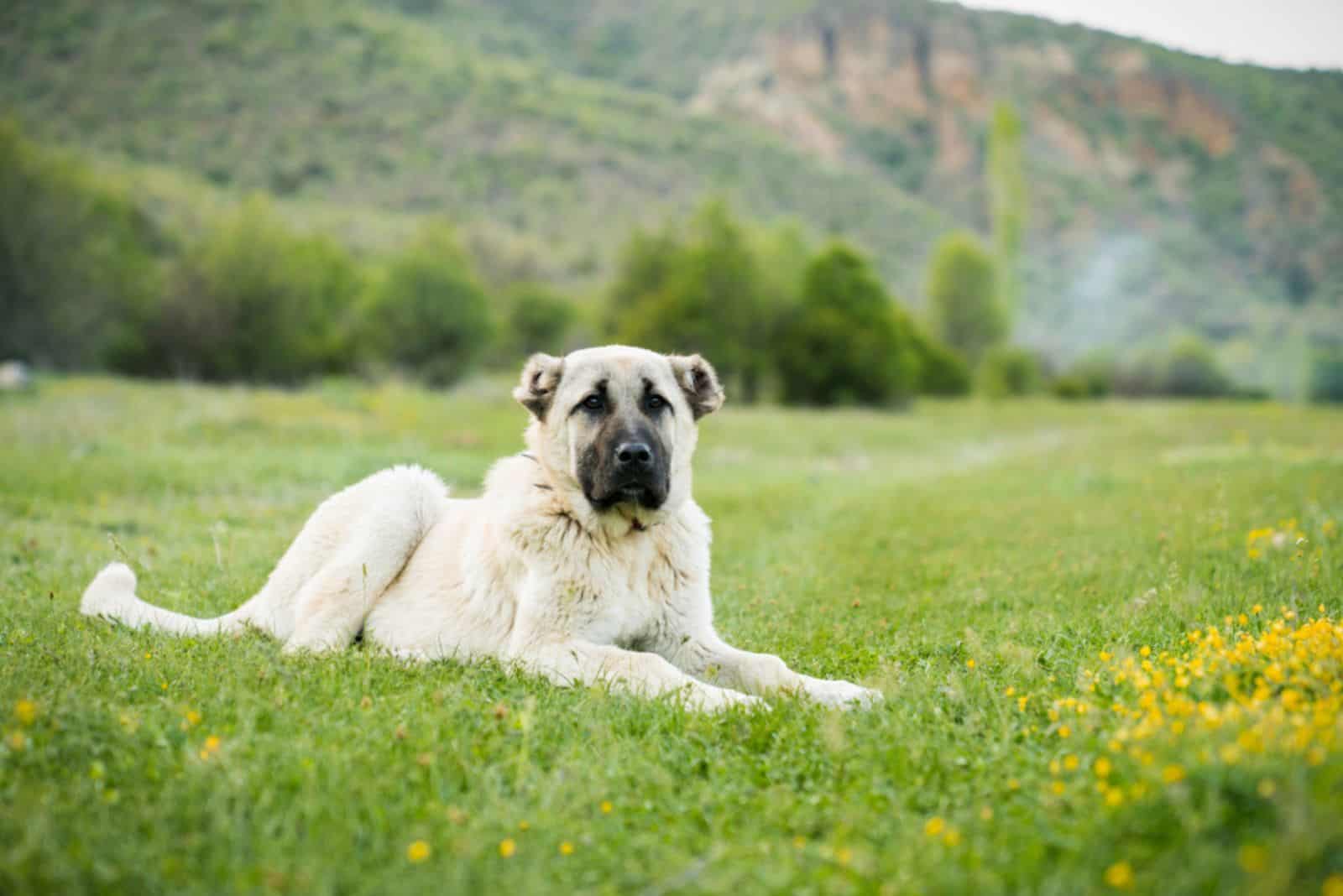
While both dogs have a longer muzzle and a sturdy, thick body, the coat of these two canines differentiates. Kangal puppies, despite having a slightly shorter coat, do have a soft undercoat, which, together with their coarse, top coat, makes a double coat.
On the other hand, Anatolian puppies have the same coat texture in all parts of their body.
Both dogs have a black mask and a strong bite force. These herding dogs have long legs that make them run fast. Self-exercise is generally sufficient in a Kangal training as these puppies have a self-drive that makes them active all day long.
Even though many people cannot tell the difference in size, these puppies’ popularly, known as Karabash dogs, are indeed somewhat bigger than their Anatolian counterparts.
On the other hand, you can tell the difference by looking into their coat color as Karabashes come in brown and tan color patterns only.
Having a Kangal puppy in some other color variant is a disqualifying factor.
Kangal breeders do not recommend this puppy to novice owners as they are high-maintenance, both in terms of temperament and physical needs.
Anatolian Shepherd Vs Kangal: Temperament
Anatolian Shepherd Temperament
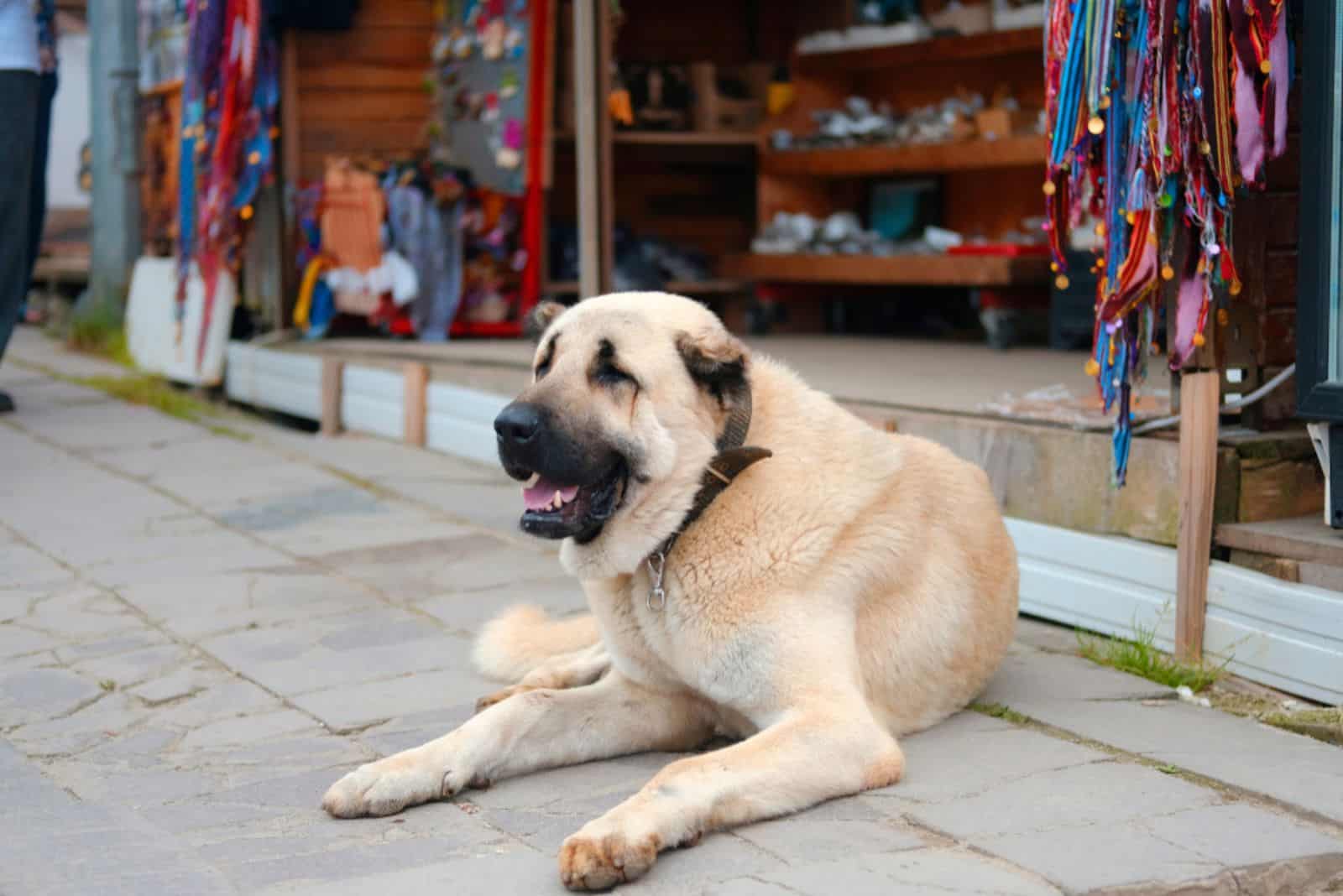
These purebred dogs, as well as many Anatolian Shepherd mixes with a dominant Anatolian bloodline, are vigilant and independent dogs.
With that being said, these dogs are not the best family pets as they are not as affectionate as some other large dog breeds, such as Mastiffs and Pitbulls.
They have a strong temperament and a fearless character, which makes them such good watchdogs. These canines are definitely not recommended for first-time dog owners as they require firm leadership and experienced dog owners.
Despite the fact that the dog itself is not as social as Retrievers or Poodles, these canines still need early obedience and socialization training. They don’t respond well to strangers, which is why you need to get them used to new faces from day one.
The breed is a natural livestock guardian dog, which means they will act protectively at all times. They don’t need as much exercise as other family dogs as they burn out their energy levels by constantly patrolling in the field.
Having the magnificent Anatolian puppy in a small apartment is not a smart idea as these canines require a lot of space and freedom of movement at all times.
Kangal Temperament
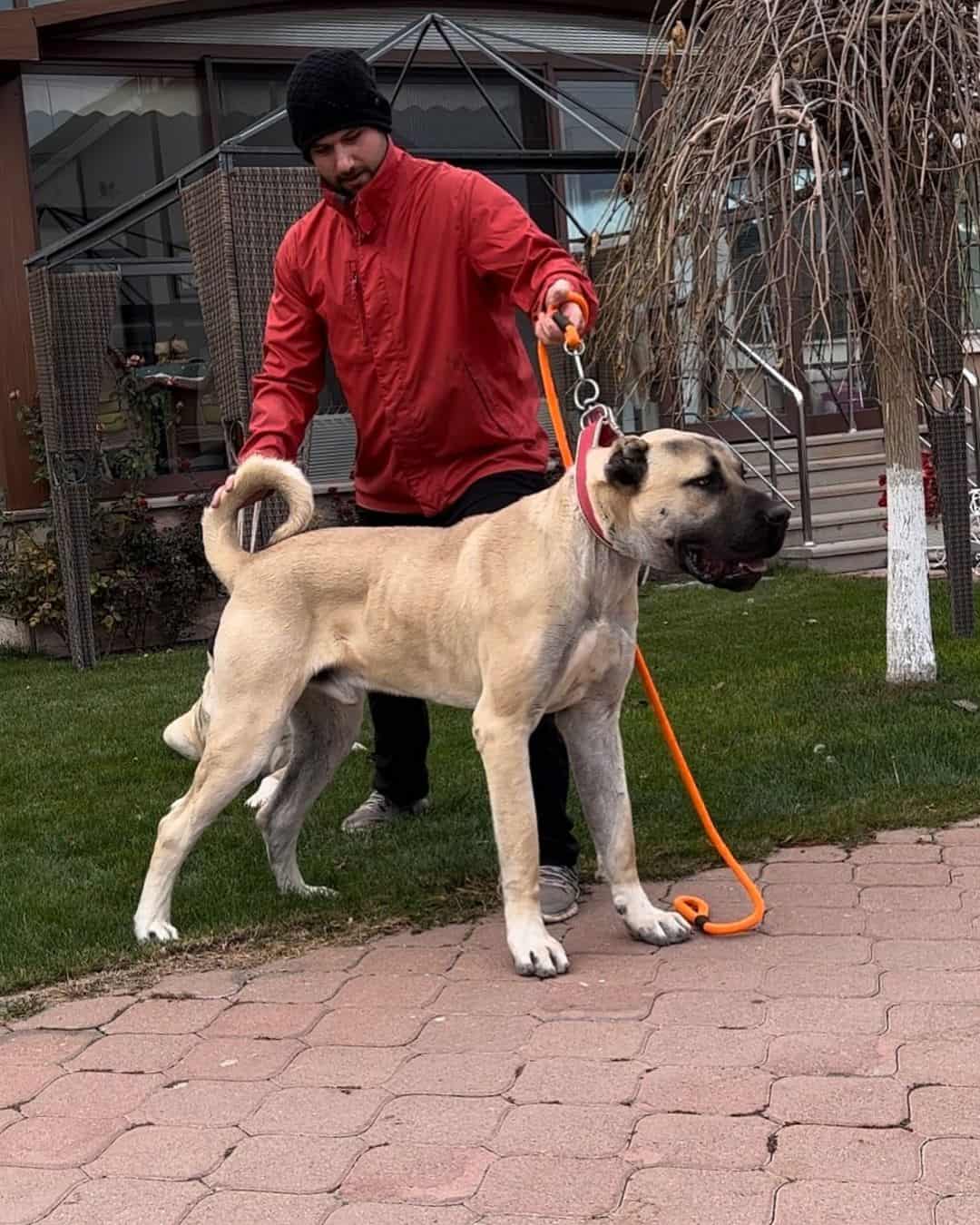
Unlike Anatolian Shepherds, Kangal dogs are generally more affectionate towards their owner. Even though they don’t make the best dogs in terms of socialization, Kangal puppies appreciate the presence of their owner, and they are more eager to please.
If you socialize and obedience train your puppy at an early puppyhood stage, then the ‘‘how to socialize an aggressive dog’’ dilemma won’t be present in your everyday life.
These United Kennel Club-recognized puppies are true kings in their packs as they are fearless, strong, and great leaders. However, the breed is not favorable around small kids or other animals as these canines have an extremely strong prey drive.
Just like Anatolian Shepherds, these dogs don’t need long hours of exercise during the day as they are active by default. Still, if you live in a city and you don’t have a big back yard, then taking these puppies out for a walk at least two times a day is a must!
These large-breed dogs are loyal companions, but their overall training process is exhausting and challenging. Buying them without deep, proper research would be a cardinal mistake. The breed is mainly recommended to sportsmen, or to people with an active lifestyle.
Anatolian Shepherd Vs Kangal: Social Skills
Anatolian Shepherd Social Skills
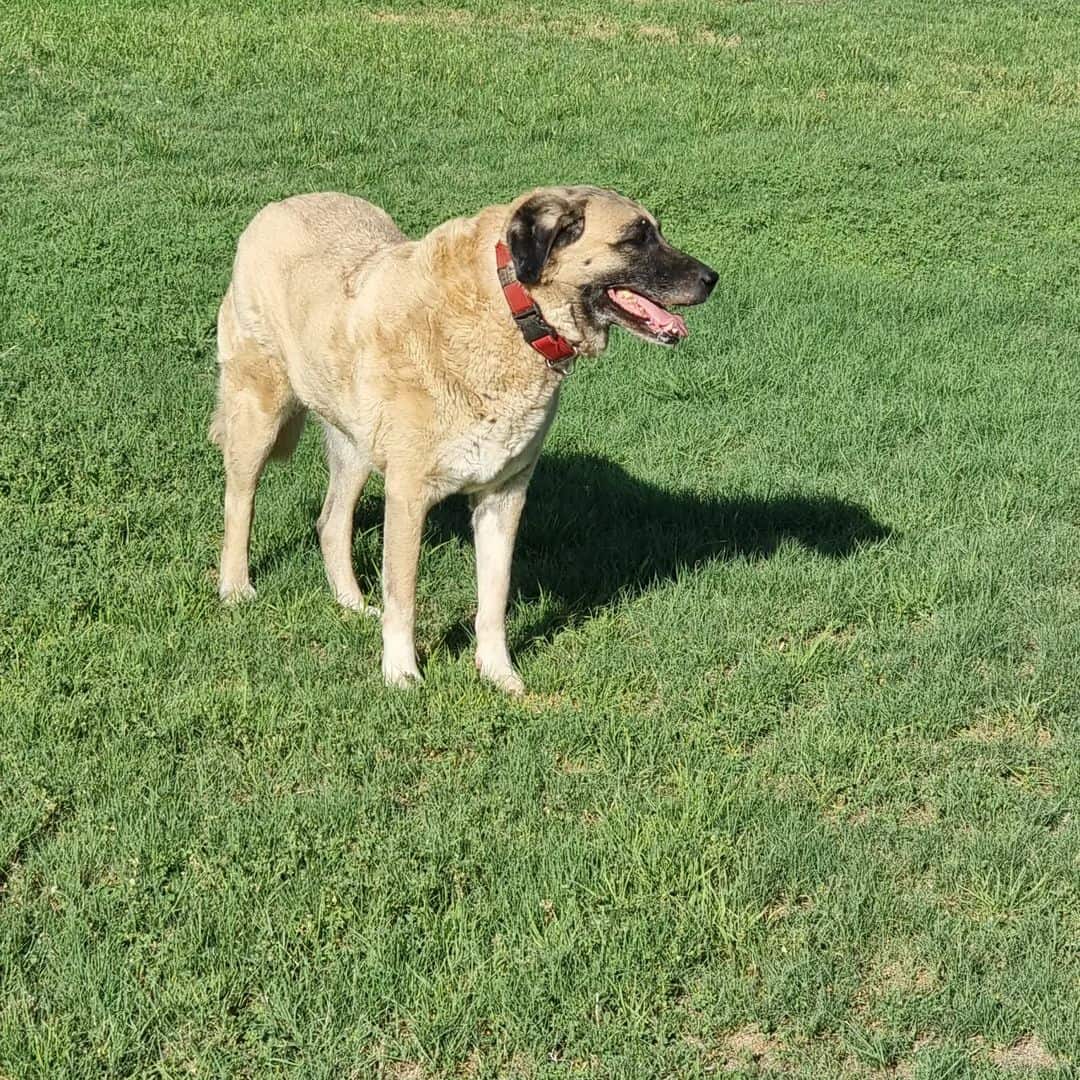
Social skill is one domain in which you can tell that these two dogs are two different breeds. That’s because Anatolian puppies are not exactly the most suitable family dog breed in the world.
On the other hand, their Karabash counterparts are way more affectionate and attached to their owner.
The breed was initially designed to be a livestock guardian, which is why these canines are not the friendliest dogs in the club. They have a reserved and independent nature, even to family members who they don’t see on a regular basis.
That’s why early socialization and obedience training is crucial in their upbringing process. Early-socialized Anatolian puppies have a better potential of bonding with a smaller group of people, including friends who come over to your house on a regular basis.
On the other hand, improperly bred or trained puppies will display aggression frequently. Having this dog in a family with small kids is never a good option as they don’t have a high level of tolerance or the parental instinct of German Shepherds or Labradors.
Still, a commitment to work and a lot of positive reinforcement might turn your Anatolian knight into a decent family dog.
They probably won’t be interested in giving you a paw or turning themselves around for fun, but they will show affection and loyalty by seeking your closeness at resting time.
Kangal Social Skills
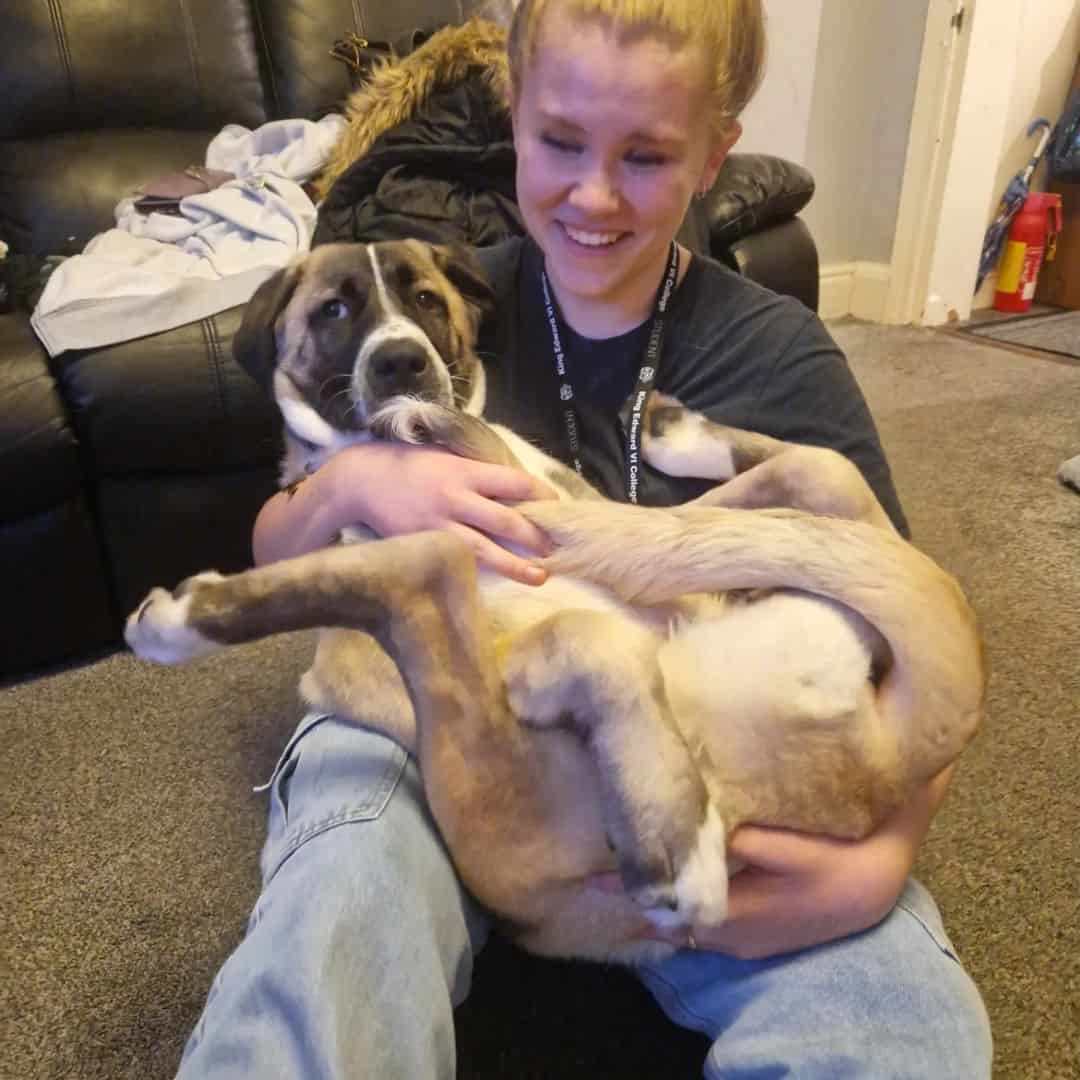
Kangal doggies are way more controlled and calm than their Anatolian counterparts. Despite their vigilant and protective nature, these dogs can be extremely good family dogs. They have a more tolerant temperament, and they enjoy the company of their owner more.
Still, this is a watchdog by nature, which means they need socialization from an early age. Interactive dog toys, healthy snacks, and dog training collars are some of the positive reinforcement techniques that you can use in their socialization training.
Furthermore, don’t hesitate to bring your friends over to your house, especially during their puppyhood stage. The dog needs to differentiate strangers who are welcomed to your house from potential enemies and predators.
Even though the breed was initially used as a guardian in Turkey, more and more people today have these powerful canines as their pets. However, having a Kangal puppy inside a small house or in a small back yard wouldn’t do justice to this dog.
They require plenty of space, and they need to feel that they have all the freedom to move, run, and play. Otherwise, you will have a frustrated pet with self-destructive behavior. That’s why you always need to think twice before choosing a puppy for your home.
Anatolian Shepherd Vs Kangal: Trainability
When it comes to trainability, you should know that both of these dogs are independent and stubborn at times. With that being said – the training process of these two is not a walk in the park.
Both breeds are quite intelligent, but they don’t respond the best to positive reinforcement. On the contrary, they require strong leadership and a firm touch. Both of these dogs need to know at all times who the pack leader is, which is exactly why the breed is not recommended for first-time dog owners.
Still, there are some training tools that you can use in order to boost the entire process, such as dog training collars. However, the best tool that you can use during the training process is patience.
These canines require experienced, but patient owners. In the long run, you will get a reliable, loyal, and affectionate dog that is at all times ready to defend and protect.
Obedience-trained (mostly Kangal) puppies are decent companions on hikes, walks, and jogging. These activities will be perfect for their energy burnout, but at the same time, you will initiate an extra activity that your dog will love.
In a nutshell – there are not many differences between these two canines when it comes to training. Both dogs are practically the same in this regard, even though the Kangal breed might seem a little more open to new activities.
On the other hand, both dogs require plenty of space as they self-exercise. If you have a big yard, don’t bother with exercising. Your puppy will do the job on its own!
Which One Is Better With Kids
This is always a sensitive topic when it comes to both Kangals and Anatolian Shepherds. Neither one of these two dogs is recommended for families with small kids.
Despite the fact that the Karabash breed has a slightly more tolerant and calm nature, these canines have a high prey drive which negatively affects their relationship with children.
On the other hand, both Kangal and Anatolian Shepherd breeders breed these dogs for guardian purposes. With that being said, these canines generally play roughly.
However, if you’re keen on buying one of the two, always research their breeders first. Reputable breeders will make sure that these dogs are early-socialized and well-mannered.
The process of socialization is never-ending when it comes to aggressive dogs, which means that you need to subject your puppy to socialization training on a regular basis.
We can say that the ‘‘Anatolian Shepherd vs Kangal’’ battle is a tie in this regard as both dogs share practically the same traits when it comes to their relationship with kids.
Anatolian Shepherd Vs Kangal: Dieting
The Karabash breed is slightly bigger than the Anatolian one, but this does not necessarily make its feeding chart drastically different. In fact, both dogs need at least three to four cups of food per day.
You should be careful with kibble, especially at a young age. Both dogs need kibble made for large dogs. On the other hand, these canines respond to home remedies well as both enjoy raw foods.
Still, the dog requires high-quality food with extra protein intake. These large dogs burn out a lot of calories during the day, which is why they require protein to preserve their muscular physique.
Table scraps and junk food, as well as poor dog food brands are not recommended for these canines. As both Kangal and Anatolian puppies make large dogs, they are prone to bloat.
Stomach torsion is triggered by poor-quality food, as well as by improperly designed feeding charts.
Always pay attention to the time intervals in which you feed your canines. Avoid late meals, and always make sure that you feed them at least three to four hours before bedtime. Poor dieting can also trigger hip dysplasia or worsen the already existing condition in these dogs.
Anatolian Shepherd Vs Kangal: Lifespan
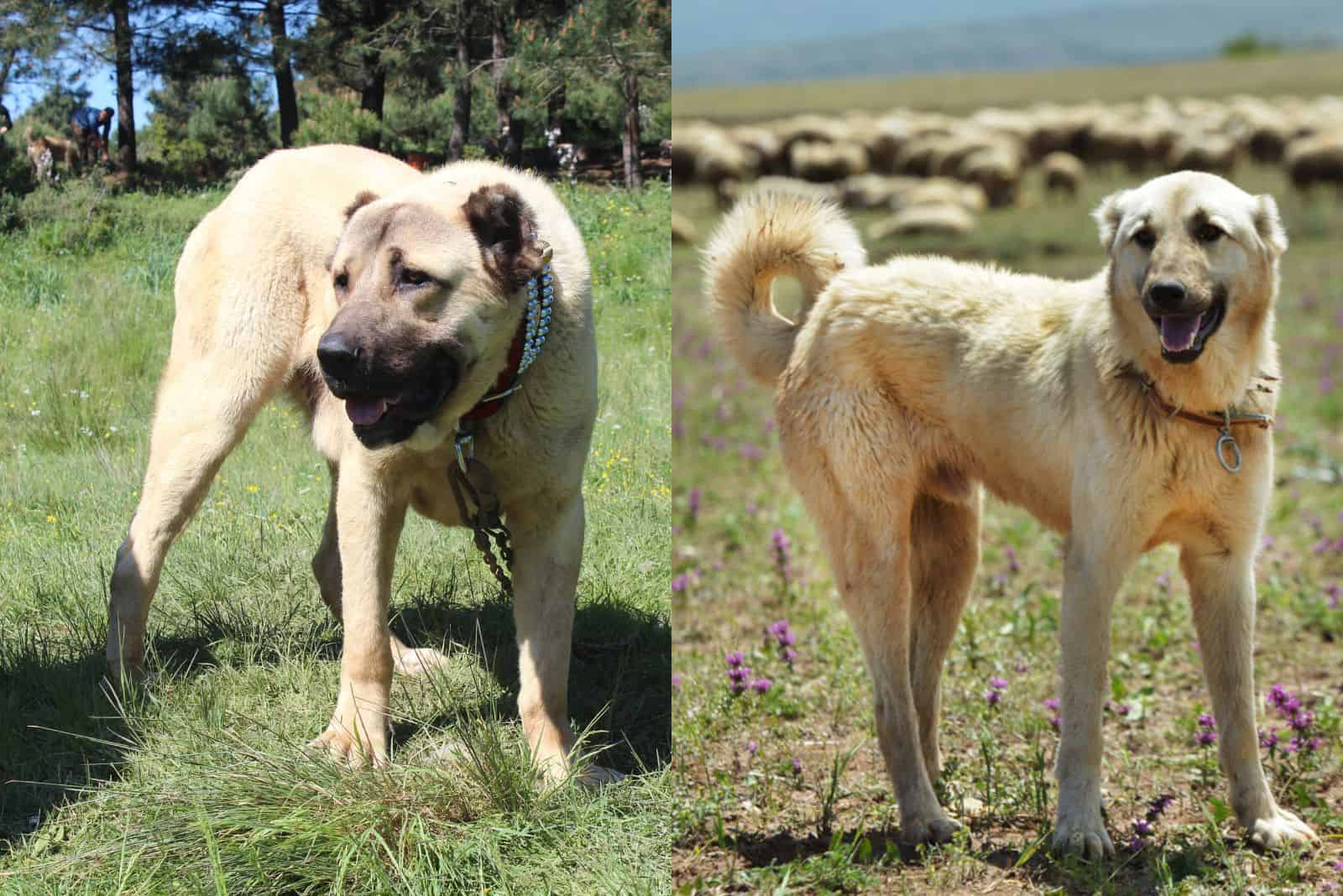
When it comes to lifespan, the ‘‘Anatolian Shepherd vs Kangal’’ battle is won by the latter. Even though neither one of these canines qualifies among the healthiest breeds in the world, Kangal dogs live slightly longer than their Turkish counterparts.
Taking into consideration that both of these dogs are large, both have a quite respectable lifespan. The Anatolian puppy lives 11 to 13 years on average. On the other hand, Karabash puppies reach up to an amazing 15 years of age.
Still, in order to have a healthy, long-living companion, you need to pay attention to its feeding habits, its dietary needs, and its exercise needs. The cost of having a large dog is always a little bit higher as large canines’ dietary needs are higher.
With that being said, the recommendation is to make a monthly expenses plan prior to Kangal or Anatolian Shepherd purchase. Having a clear plan makes it easier for you to see what expenses you can expect during the dog’s lifespan.
On the other hand, a puppy’s mental health is equally important! Puppies that live in households with plenty of space are more likely to be mentally stronger and happier.
That’s why keeping a Kangal or an Anatolian Shepherd inside a house for a good part of the day is not the smartest choice.
Anatolian Shepherd Vs Kangal: Health Issues
Unfortunately, both of these canines come with a certain health risk, just like all large breeds. Even though their entire lifespan is generally healthy, there are a few health issues that both of these dogs can face.
All Shepherd dog breeds face hip dysplasia, which is the number one issue in both Kangals and Anatolian puppies. Furthermore, both dogs can suffer from stomach torsion – popularly known as bloat.
Interestingly, these canines are naturally intolerant to anesthesia, which is something that you need to remind your veterinarian about.
In some rare cases, these dogs can suffer from lipoma (a skin tumor), and entropion, which represents an eyelid rolled inwards.
Other than that, these canines are pretty healthy, and they will probably live a long and happy life. In order to keep their health at a high level, you need to follow their feeding chart and fulfill their exercise needs.
Hip Dysplasia
Hip dysplasia in dogs is not that rare in these Turkish dogs. In fact, this condition is mostly related to large dogs, and the issue is mostly hereditary. Luckily, dysplasia is noticeable during the first several weeks of a puppy’s life, which makes intervention easier.
Also, buying a puppy from a reputable breeder will mean that you will get a hip dysplasia-free puppy in most cases. All puppies at reputable breeders are subjected to early hip and elbow dysplasia tests, which prevent the possibility of selling a puppy with this condition.
However, if you do have a dog with this condition, you should know that overwhelming a puppy with excessive training is not the smartest option. Puppies with hip dysplasia cannot perform as well as their healthy counterparts.
Generally, you will recognize a dog with dysplasia by them having a bunny walk, inability to run or jump, or by lethargic behavior.
If you decide to treat hip dysplasia, you should know that surgery is the ultimate solution. Physical therapy and weight reduction are indeed recommended, but a surgical procedure is the most common treatment option in this regard.
However, surgery itself is not that cheap as its average price revolves around $1500 to $3000. The recovery period from this procedure usually takes ten to twelve weeks.
Bloat
Bloat is another common problem for large dogs. Generally, it is caused by improper feeding habits and poor dieting. That’s why you should always be prepared to give your puppy the best feeding schedule possible.
Overfeeding can cause bloat, as well as poorly-timed meals. Never feed a dog right before bedtime as unprocessed food can be one of the triggers of bloat, too.
You can recognize this unpleasant condition in your dog’s lethargic behavior, lack of appetite, stomachache, bloated stomach, and sometimes in refusing to drink water.
As soon as you notice some of these symptoms – the advice is to take your puppy to a vet immediately. Untreated bloat can have deadly repercussions. In fact, bloat is known to be one of the most common causes of death in dogs.
Anesthesia Intolerance
Anesthesia intolerance, also referred to as anesthesia allergy, is a rare phenomenon, but it can affect either a Kangal or an Anatolian Shepherd.
Some dogs don’t respond well to anesthesia, which is why they develop symptoms such as redness, swollen site of injection, decreased blood pressure, low pulse, and panting.
Unfortunately, some dogs fall into anaphylactic shock, which sometimes ends in death.
It is highly crucial to calculate the proper dose of anesthesia based on body mass. Giant breeds generally respond faster to drugs. However, this condition is probably less likely to happen as most veterinarians are aware of the possibility of overdosing a giant breed.
Anatolian Shepherd Vs Kangal: Price
The ‘‘Anatolian Shepherd vs Kangal’’ battle in terms of price goes in favor of the Anatolian puppy. That’s because these canines are slightly cheaper than their Karabash counterparts.
Generally, you can expect to spend somewhere around $1000 for an Anatolian puppy. On the other hand, Kangal puppies cost at least $500 more than their aforementioned counterpart.
The price for the Kangal puppy is higher, and it is based on the fact that these purebred giants are much rarer.
In fact, coming across a real, authentic Kangal dog is far more difficult than finding a reliable Anatolian Shepherd.
Even though neither of these dogs qualify among the most expensive dog breeds in the world, you should be aware of the additional costs of having one as your companion.
For starters, make sure that you get your puppy from a reliable breeder. That way, you will avoid additional costs such as the first vaccine, deworming, health exams, and AKC registration papers (if you’re buying an Anatolian Shepherd).
These things are already included in the price at reputable breeders, which is one of many reasons for staying away from shady puppy mills.
On the other hand, you should expect to set aside money for food, snacks, healthcare, potty (or poop bags), a leash, a collar, a microchip, pet insurance (optional), a dog bed, and grooming kits.
Who Wins The Battle: The Takeaway
If we calculate all the pros and cons of having both Kangal and Anatolian puppies, we can say with certainty that – it is a tie!
Karabash puppies may be slightly more affectionate and open to strangers, but on the other hand, Anatolian puppies cost significantly less, which makes them lower-maintenance.
In terms of behavior – both dogs require firm leadership and an experienced dog owner. Early socialization and obedience training are a must in the case of both dogs as they are not the friendliest breeds among dogs.
Still, both of these puppies are excellent guardians, which is why it is really hard to say which one is better in the long run. Karabash puppies are probably more intimidating in their overall appearance as they are bigger.
On the other hand, their Anatolian counterpart is just as good of a hunter as them.
Some may say that these puppies are among the scariest dogs in the world, which is why getting them as family pets is not that common among dog owners.
Still, those people who intend to buy a good, reliable watchdog for guarding purposes are advised to take into consideration these two athletes as both dogs are loyal and eager to protect at all times.
FAQs
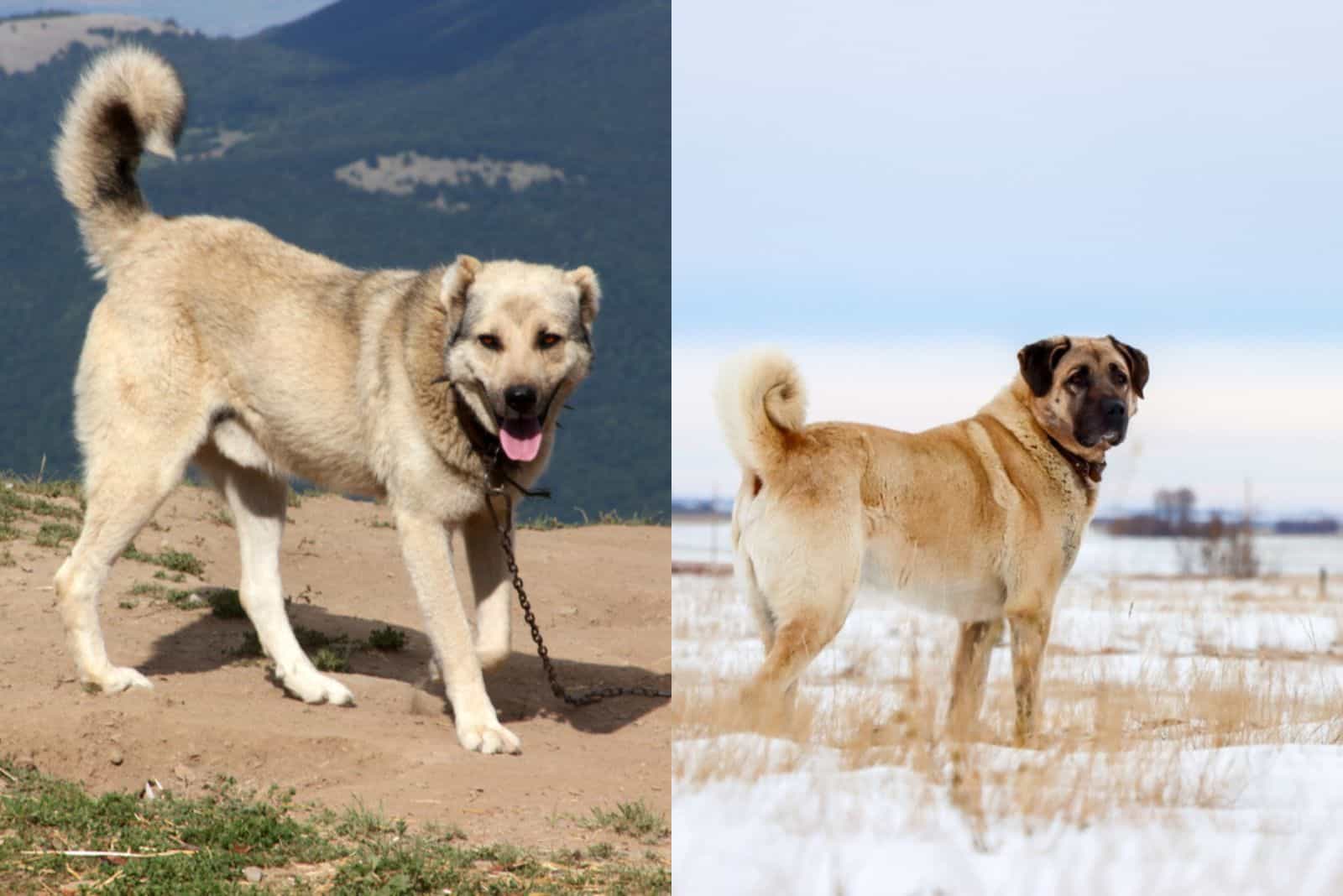
If we take into consideration that Kangal puppies are slightly bigger than their Anatolian counterpart, we can say with a grain of salt that these dogs are probably stronger, too!
These canines qualify among the tallest breeds in the world, and they represent a true threat to all kinds of predators. They will fight off wolves or other dogs without any reluctance.
However, these canines first use their powerful barking to scare off potential enemies before actually attacking them.
Even though the American Kennel Club doesn’t distinguish a difference between these two dog breeds, we can say with certainty that Kangal canines are indeed a different breed.
They differ in their physical appearance as they come only in brown and tan color patterns, unlike their Anatolian counterpart that comes in various color patterns.
Furthermore, they appear slightly bigger than Anatolian canines, and according to many professionals, these canines are way more open to their owner than Anatolian Shepherds.
However, both of these dogs have many shared traits such as behavioral traits, watchdog instincts, a prey drive, and complex trainability. Being stubborn, independent, and reserved doesn’t make them the easiest dogs to potty train, obedience train, or socialize.
It is difficult to distinguish these two dogs, especially if you are an inexperienced dog owner. Both dogs look the same to the untrained eye. However, there are some key differences that can help you tell them apart.
For instance, Kangal puppies have a short double coat, while Anatolian Shepherd puppies have a slightly longer one. Furthermore, the first-mentioned puppies don’t come in many colors as they appear in brown / tan color variants only.
Anatolian puppies are generally more reserved and independent, while their Kangal counterpart shows more affection towards their owner.
Conclusion
The ‘‘Anatolian Shepherd Vs Kangal’’ dilemma is never-ending, especially if we take into consideration the fact that many dog experts can’t tell these two dog breeds apart.
Both puppies make equally good watchdogs, which leaves little to no space to argue about their strengths or weaknesses. However, we can weigh the qualities of these canines based on their major differences listed out in this article. Still, the final choice is totally made based on personal preferences and taste.
